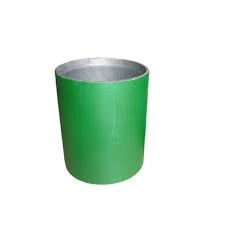- Afrikaans
- Albanian
- Amharic
- Arabic
- Armenian
- Azerbaijani
- Basque
- Belarusian
- Bengali
- Bosnian
- Bulgarian
- Catalan
- Cebuano
- Corsican
- Croatian
- Czech
- Danish
- Dutch
- English
- Esperanto
- Estonian
- Finnish
- French
- Frisian
- Galician
- Georgian
- German
- Greek
- Gujarati
- Haitian Creole
- hausa
- hawaiian
- Hebrew
- Hindi
- Miao
- Hungarian
- Icelandic
- igbo
- Indonesian
- irish
- Italian
- Japanese
- Javanese
- Kannada
- kazakh
- Khmer
- Rwandese
- Korean
- Kurdish
- Kyrgyz
- Lao
- Latin
- Latvian
- Lithuanian
- Luxembourgish
- Macedonian
- Malgashi
- Malay
- Malayalam
- Maltese
- Maori
- Marathi
- Mongolian
- Myanmar
- Nepali
- Norwegian
- Norwegian
- Occitan
- Pashto
- Persian
- Polish
- Portuguese
- Punjabi
- Romanian
- Russian
- Samoan
- Scottish Gaelic
- Serbian
- Sesotho
- Shona
- Sindhi
- Sinhala
- Slovak
- Slovenian
- Somali
- Spanish
- Sundanese
- Swahili
- Swedish
- Tagalog
- Tajik
- Tamil
- Tatar
- Telugu
- Thai
- Turkish
- Turkmen
- Ukrainian
- Urdu
- Uighur
- Uzbek
- Vietnamese
- Welsh
- Bantu
- Yiddish
- Yoruba
- Zulu
Casing and Tubing Joint Design for Enhanced Oil and Gas Well Performance
Casing and Tubing Connections Essential Components in Oil and Gas Production
In the oil and gas industry, the extraction of resources from deep beneath the Earth’s surface requires specialized equipment and materials designed to withstand high pressures and harsh environments. Among the many components crucial to the drilling process, casing and tubing connections play a vital role. Understanding these connections is key to ensuring the integrity of wells and the safety of operations.
The Basics of Casing and Tubing
Casing refers to the series of pipes installed in the drilled hole to maintain the structure of the wellbore and prevent collapse. It also serves to protect groundwater and other formations from being contaminated by drilling fluids or hydrocarbons. Tubing, on the other hand, is the pipe that transports the oil or gas from the well to the surface once extraction begins. These two components are typically made of high-strength steel to withstand the extreme conditions found deep underground.
Types of Connections
The connections between casings and tubings are critical for ensuring the structural integrity of a well. There are several types of connections used in the oil and gas industry, each designed for specific applications and conditions
1. Threaded Connections These are among the most common types of connections in tubing and casing operations. They feature male and female threads that allow for a tight seal. However, they require careful handling during installation, as they can be susceptible to damage if not properly aligned.
2. Welded Connections Utilized in specific scenarios, welded connections involve fusing two pieces of steel together using heat. This type of connection is often stronger than threaded joints but is less flexible in terms of expansion and contraction due to temperature changes.
3. Couplings Couplings act as connectors between two lengths of casing or tubing. They are particularly useful in situations where sections must be replaced or when integrating different pipe sizes or grades.
casing and tubing connections

4. Slip Joints These joints allow for some movement, accommodating thermal expansion and contraction in the drilled sections. They are often used in scenarios where there are varying temperature regimes within the well.
5. Specialty Connections There are also innovative connections, such as thermal expansion joints and composite connections, designed for unique applications, such as high-temperature or corrosive environments. These connections typically incorporate advanced materials and engineering designs to mitigate the risks associated with challenging conditions.
Considerations for Connection Selection
When selecting casing and tubing connections, several factors must be considered, including
- Pressure Ratings It is essential to choose connections that can withstand the anticipated pressures during both drilling and production. - Material Compatibility The material used for connections must be compatible with the fluids and gases that will flow through them. - Environmental Conditions The geological and environmental conditions of the drilling site can greatly influence the choice of connection type. - Installation Practices Proper installation is imperative to ensure the longevity and reliability of the connections. Poor installation can lead to leaks, failures, and costly workovers.
Importance of Proper Maintenance
Regular maintenance and inspections of casing and tubing connections are necessary to ensure their continued performance. Advanced technologies, such as ultrasonic testing and visual inspections, are employed to detect potential issues before they lead to failures. Proactive maintenance helps in extending the life of these vital components and enhances the overall safety of operations.
Conclusion
Casing and tubing connections are essential to the success of oil and gas operations. As the industry continues to evolve with new technologies and extraction techniques, the importance of understanding and maintaining these connections remains paramount. By focusing on quality materials and proper installation practices, the oil and gas sector can ensure safe and efficient resource extraction, protecting both the environment and the investments made in these valuable resources.
-
Tubing Pup Joints: Essential Components for Oil and Gas OperationsNewsJul.10,2025
-
Pup Joints: Essential Components for Reliable Drilling OperationsNewsJul.10,2025
-
Pipe Couplings: Connecting Your World EfficientlyNewsJul.10,2025
-
Mastering Oilfield Operations with Quality Tubing and CasingNewsJul.10,2025
-
High-Quality Casing Couplings for Every NeedNewsJul.10,2025
-
Boost Your Drilling Efficiency with Premium Crossover Tools & Seating NipplesNewsJul.10,2025







